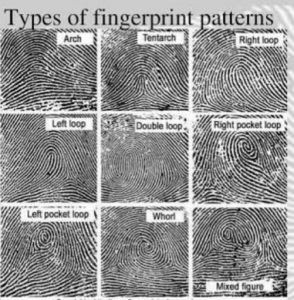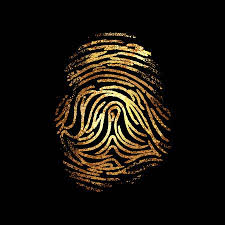Dactylography is defined as a scientific method of study of fingerprints for the purpose of identification.
Dactyloscopy is the technique of comparing fingerprints, typically those found at the setting of a crime and those of a suspect. Due to the uniqueness of the fingers’ and hands’ papillar lines, it is generally considered a reliable method of identifying a person. Juan Vucetich perfected dactyloscopy in late 19th and early 20th century.
Facts:
Dactylography is based on the fact that
- Not two person’s fingerprints are same,not even of identical twins.
- Fingerprints of an individual remain same from birth till death of the person.
Classification:
On the basic shape of pattern,fingerprints can be classified as follows;
- Loop
- Arch
- Whorls
- Composite

History of fingerprints:
In early 200 B.C., the Chinese used fingerprints as a personal signature.
Sir William Herschel, a British officer in India in the 1850s, is credited with the first systematic use of fingerprints for identification. The first system that allowed fingerprints to be matched against each other in an efficient manner was devised by Sir Francis Galton, an English scientist, in 1891. His system was later perfected and refined by Sir E. R. Henry, a commissioner of Scotland Yard in London. The Henry system is used in most countries today. Some South American countries, however, use a system devised by Juan Vucetich, an Argentinian.
How fingerprints are recorded?
Fingerprints are recorded by rolling the fingers over a pad stained with printer’s ink and making an impression on a standard card. Each finger is printed separately, and an additional print is made of each hand.
Matching Fingerprints:
When the police investigate a crime, they often check the scene of the crime for fingerprints that may be left invisibly on smooth surfaces by the oil secreted through the fingertips. To discover this latent fingerprint, as it is called, the police dust a fine powder over the surface, making the print visible. Other methods used involve the application of silver nitrate or iodine fumes on the surface. The fingerprints, once visible, are photographed.If someone is suspected of the crime, the police will take thier fingerprints to see if they match the ones found at the scene of the crime.

🔥178 Views






